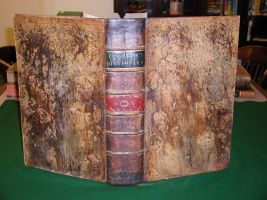
Once you have reviewed the data table or catalogue and determined which text/s you would like to use for your class, use the exercise template below to add the text/s into the bracketed space. Exmp: [Add in the chosen texts here]
You can either copy and paste the exercise template below or you can download the exercise template in RTF (Rich Text Format) for editing in any Word Processor.
Click Here For the Print Version (Rich Text Format - Generic Format for any Word Processor)
Click Here For the Print Version of the Grading Rubric (Rich Text Format - Generic Format for any Word Processor)
This exercise provides framework for students to think about books as commodities that reflect culture, marketing, and aesthetics, and offers strategies for students to evaluate books as artifacts of culture.
As you work through this exercise, please keep the following in mind:
1. You must comply with all of the rules of the Rare Book Room.
- Please wear gloves (which are provided by the Rare Book Room) while handling all texts.
- Please handle all texts with care; do not bend book spines back, bend pages, and so on.
- You may only use pencils while working in the Rare Book Room; pens are not allowed.
[Add in the chosen texts here]
2. The Rare Book Room is open from 9:00 until 5:00, Monday through Friday, and Tuesday evenings from 5:00 until 9:00.
As you evaluate a book, consider the following:
- What is the size of the book? What does the size suggest about the potential audience of the book?
- What is the cover made of? Are there illustrations on the cover? Decorations? If so, are they ornate? Simple? Related to the content of the book? What does the cover suggest about the intended market for the book? (Hint: think about the marketing of modern paperbacks versus hardback books).
- Are the edges of the paper gilded? Colored? Plain? Is the binding design the same as the book cover? Feel the paper, and look at the size and style of the print. What do these physical details suggest about the intended market for the book?
- Is the book illustrated? Are there many illustrations? What is the purpose or function of the illustrations? What do the illustrations suggest about the intended market for the book?
- Does the book have a dedication or a preface by the author? If so, what does this suggest about the author’s intentions for the book?
- Does the book have a table of contents? If so, what does this suggest about the author’s approach to his/her subject? The author’s strategy in terms of the reader?
- Does the book include information about the publisher’s catalogue (with the titles and/or prices of other books that the publisher sells)? If so, what does this suggest about the publisher, their market share, and their marketing strategies?
Based on your responses to these questions, you should be able to write a brief (one to two page) essay in which you develop a thesis about the book and the literary marketplace.
Please keep the following in mind:
- State your thesis at the beginning of your essay. Your thesis may focus on the style, content, or marketing of the book—or anything else that you find compelling about it. Remember that a thesis is a position statement, and that you need to stake a position about this book in your essay.
- The more specific evidence you use in your essay to prove your point, the better.
- Your essay should not be a list of responses to the questions 1 through 7 above. The questions are intended to give you some strategies to begin your analysis; they do not provide the structure (or the thesis) for your essay, nor are they intended to limit your analysis.
- Each paragraph of your essay should support your thesis statement. Please make sure that there are transitions between paragraphs so that each paragraph leads to the next, and make sure that each paragraph builds upon its predecessor.
- Every book reflects a cultural moment. Your job is to make sense of it.
- This assignment does not require external research—although you may choose to pursue research if you wish. This assignment does require careful viewing, thinking, and writing.